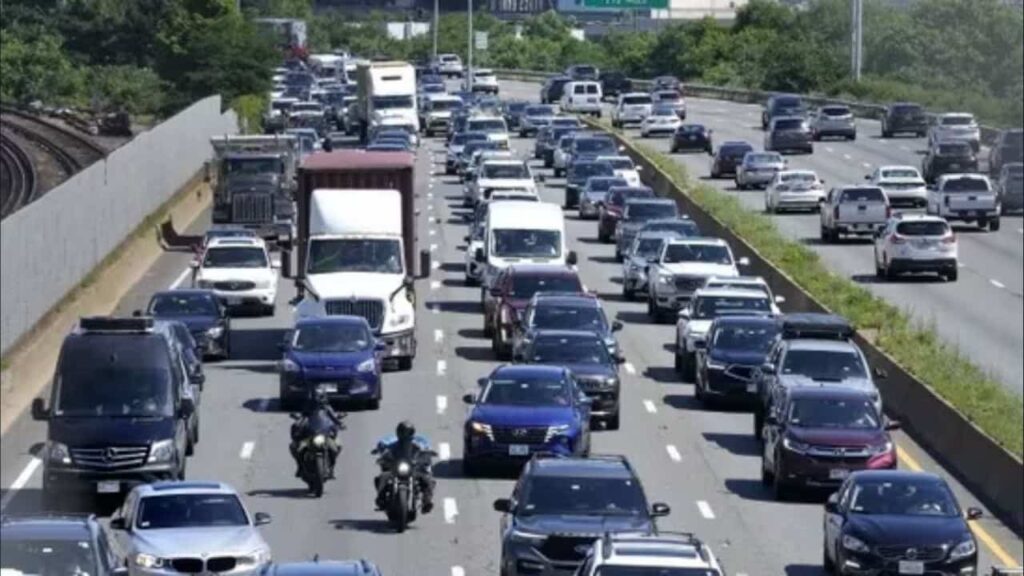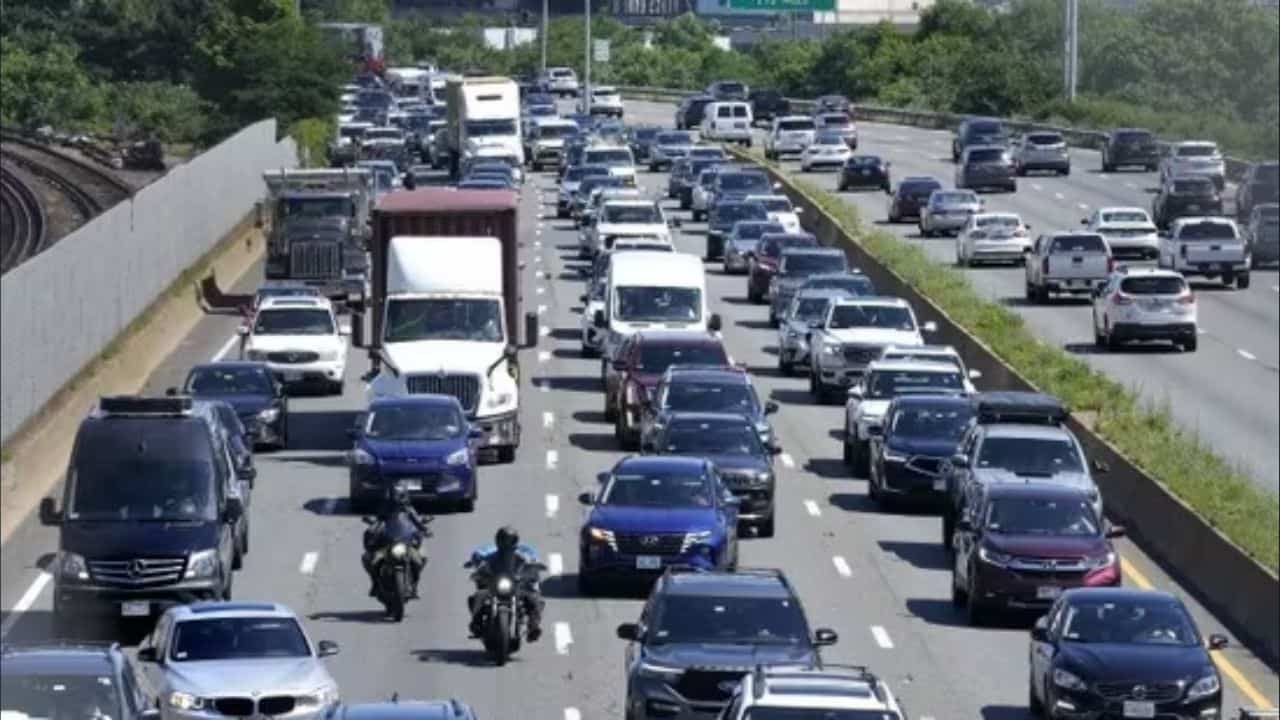Labor Day travel tips, best travel times, Labor Day weekend, travel advice, road trip tips, airport tips, Labor Day traffic, Labor Day air travel, travel during Labor Day, holiday travel planning
Planning to travel over Labor Day weekend? Discover the best times to hit the road and navigate the skies, along with essential tips for avoiding delays and making the most of your holiday travel. From traffic patterns to flight delays, prepare for a smooth journey this Labor Day.

The Expected Surge in Travel
As the summer draws to a close, airports, highways, and popular tourist destinations are expected to be crowded. According to the Transportation Security Administration (TSA), over 17 million people are anticipated to be screened between Thursday and the following Wednesday, making it a record-breaking period for Labor Day travel. AAA reports that domestic travel bookings are up by 9% compared to last year, indicating that many people are eager to take advantage of this long weekend.
Labor Day weekend is a significant holiday in the United States, marking the unofficial end of summer. With children back in school and the days getting shorter, this weekend offers one last opportunity to enjoy summer activities before transitioning into the fall season. Whether it’s a trip to the beach, a visit to a theme park, or a journey to a favorite vacation spot, many Americans will hit the road or take to the skies during this busy holiday period. However, with the increase in travel, it’s crucial to plan ahead to avoid the inevitable congestion and delays that come with holiday travel.
American Airlines is preparing for its largest Labor Day weekend operation ever, expecting a 14% increase in passengers compared to the previous year. This surge in travel highlights the importance of being well-prepared to navigate the busy airports and congested roads during this period.
Understanding Travel Costs
One of the main concerns for travelers is the cost associated with their trip, whether by car or plane. For those planning to drive, there’s some good news: gasoline prices are lower this year compared to last year. The nationwide average for gasoline recently stood at $3.44 per gallon, down from $3.86 a year ago, according to AAA. This decrease in fuel prices offers a small financial relief for motorists who are hitting the road for the holiday.
For those driving electric vehicles, the cost of charging can vary significantly depending on the location. The average price for a kilowatt of power at an L2 commercial charging station is about 34 cents. However, this cost fluctuates, with some states like Kansas and Missouri offering prices under 25 cents, while others like New Hampshire, Tennessee, and Kentucky have rates exceeding 40 cents. Hawaii is the most expensive, with an average cost of 56 cents per kilowatt.
Air travel is another popular option for Labor Day weekend, and there’s some positive news on that front as well. Average airfares in July were down 7.1% from June and 2.8% from July 2023, according to the government’s consumer price index. This trend is expected to continue as the peak summer-vacation season ends, leading to lower airfares. Steve Hafner, CEO of the travel metasearch site Kayak, noted that airfares are down about 26% from the summer and even 4% from the previous fall, making this an opportune time to book flights for the holiday.
Best Times to Travel by Road
If you’re planning to drive during Labor Day weekend, timing is crucial to avoid the heaviest traffic. On Thursday and Friday, which are expected to be the busiest travel days, it’s advisable to hit the road either before morning rush hour or later in the evening to avoid being stuck in traffic. Transportation-data provider INRIX suggests avoiding travel between 1 p.m. and 7:30 p.m. on Thursday and between 2 p.m. and 6 p.m. on Friday, as these are peak times for traffic congestion.
On Saturday, the traffic patterns shift, and the worst time to be on the road is between 8 a.m. and 11 a.m. For the return trip on Monday, travelers should brace themselves for a long day on the road, as heavy traffic is expected throughout the day, particularly between 11 a.m. and 8 p.m.
In addition to traffic congestion, there’s also an increase in risky driving behavior during holiday weekends. Data from Arity, part of insurance giant Allstate, indicates that speeding over 80 mph has increased by 83%, and “very high speeding” — defined as faster than 100 mph — is up by more than 50%. This highlights the importance of driving safely and being vigilant on the road, especially during busy travel periods.
Navigating Busy Airports
For those traveling by air, Friday is expected to be the busiest day at airports, with the TSA anticipating screening 2.86 million people. While this is a significant number, it doesn’t surpass the single-day record of 3.01 million set on July 7, the Sunday after Independence Day. The TSA has assured travelers that it has enough screeners to keep the wait times manageable, with regular lines expected to take 30 minutes or less and PreCheck lines no more than 10 minutes.
American Airlines has also prepared for the increased demand, with Thursday and Friday projected to be the airline’s busiest days, operating around 6,400 flights each day. Even on Labor Day itself, American Airlines has 6,300 flights scheduled, indicating the high volume of travelers during this period.
What to Do If Your Flight Is Delayed or Canceled
Flight delays and cancellations are a common occurrence during busy travel periods, and it’s essential to be prepared for these situations. Before heading to the airport, it’s advisable to check your flight status to avoid unnecessary time spent at the airport. In the event of a cancellation, airlines often automatically rebook passengers on the next available flight. However, this may not always be the best option.
Travel experts recommend getting in touch with the airline’s help center, either by phone or through social media, to explore other rebooking options that might be more convenient. Julian Kheel, founder and CEO of Points Path, suggests that airport agents often have more flexibility in helping passengers, but they may be overwhelmed if there are widespread cancellations. Therefore, it might be quicker to rebook through the airline’s website or app.
If the airline has international help numbers, calling one of those can sometimes get you through more quickly than the U.S. lines, providing a useful tip for those dealing with delayed or canceled flights.
Refunds and Reimbursement
In cases where flights are canceled, airlines are required to provide refunds, including for any extra fees paid. However, they are not obligated to offer cash compensation, and most major U.S. airlines do not. Only Alaska, Southwest, and JetBlue have policies that promise travel vouchers if the cancellation is the airline’s fault.
If you find yourself stranded overnight due to a canceled flight, it’s worth asking the airline about covering the costs of a hotel, meals, and ground transportation. Most major U.S. airlines, except for Frontier, promise to assist with these expenses for “controllable” disruptions, as outlined by the Transportation Department’s airline-policy dashboard. However, these commitments do not apply to cancellations caused by weather-related issues.
It’s also a good idea to keep receipts for any out-of-pocket expenses, as you may be able to file a claim later for reimbursement.
Final Tips for a Smooth Travel Experience
To ensure a smoother travel experience during Labor Day weekend, consider these final tips:
- Leave Early: Everything tends to take longer during busy travel periods, from getting through airport security to finding parking. Leaving early gives you a buffer to deal with unexpected delays.
- Monitor the Weather: Even if the weather is clear at your location, storms at your destination or along your route can cause delays. Having a backup plan can help you navigate any disruptions.
- Be Patient and Polite: Travel can be stressful, especially during peak periods. Remember that customer-service agents are working hard to assist everyone, so a little patience and politeness can go a long way in getting the help you need.
Conclusion
Traveling during Labor Day weekend can be a rewarding experience, offering one last chance to enjoy summer activities before the season ends. However, it’s also a time of increased travel, leading to crowded airports, congested highways, and potential delays. By planning ahead, being aware of the best times to travel, and preparing for possible disruptions, you can make the most of your holiday weekend. Whether you’re hitting the road or taking to the skies, a little preparation can help ensure that your Labor Day travel is as smooth and enjoyable as possible.
Read More
- Colorado Dog Breeder Found Dead, Puppies Missing, Suspect Arrested (Copy)
- Yelp Sues Google for Anti Competitive Practices A Legal Battle Over Local Search Dominance
- Irans Supreme Leader Opens Door to Nuclear Talks With US A Potential Shift in Diplomacy
- Colorado Dog Breeder Found Dead, Puppies Missing, Suspect Arrested
